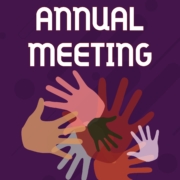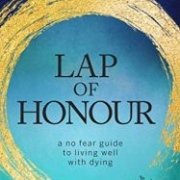Just as children’s understanding of death indicates intellectual developmental stages, an adult’s understanding of death is also something which grows and matures over time, influenced by life experience. Understanding and awareness occurs not in a gradual progressive fashion, but in leaps and bounds. I think we see this all the time in caring for people from all backgrounds and walks of life. Some people seem to get their heads around the possibility of dying very quickly and completely, but others “Rage, rage against the dying of the light” (Dylan Thomas).
Flashes of insight can strike at the oddest moments, even in those who are very reluctant to acknowledge that they may die soon, and it is important to gently capitalize on them. They may not happen when having a conversation with a family doctor, dialysis technician, hospice volunteer, or oncologist, or anyone who is comfortable rising to the challenge of having the conversation. There may however be a limited window of opportunity to talk about some of the important things that need to be discussed, especially if the person’s health is deteriorating fast, or if a big decision needs to be made about a possible intervention. It’s all very well expecting every person to be able to have a serious illness conversation about goals of care and advance care planning at any point, but in reality some people are just so terrified of dying that they are unable to have these conversations until very late in the course of illness. It then leaves them with a lot of ground to cover in a very short time. Any tools that health care providers and families can use to help introduce the conversation earlier or to seize the moment of insight and opportunity are very useful.
The Serious Illness Conversation Guide is designed for health professionals to guide conversations, but these conversations can be very difficult to start for patients who aren’t anywhere close to accepting their mortality. They can instead be ready to talk about living, albeit with a serious illness, as a kind of foot in the door for the harder conversation that can come later. Starting with a resource that has a positive but yet realistic approach can help people make those quantum leaps forward in understanding of what is going on in their lives. The book “”Lap of Honour: a no-fear guide to living well with dying” aims to provide that practical resource. Yes; it has the D-word in the sub-title; but living under trying circumstances is its focus.
“Lap of Honour” is a small-ish (200 page) paperback book that has 16 short chapters, each designed to help the reader tackle the kinds of challenges that they might face, right from the point of diagnosis of a serious illness, including one from which they might recover. It has lots of illustrations, large font for easy reading, and bullet points in the text to draw attention to the key messages of each chapter. It’s full of personal stories so it’s relatable, warm and reassuring, and quite a lot of humour.
It starts with a discussion about prognostication, and how bad we are at it, explaining what a lot of the technical medical terms mean. The next chapter tackles fear of dying head-on, with practical strategies to deal with it. The key message is that: “Just as we go to ante-natal classes when expecting a baby, preparing to die needs work and planning if it is to be done well. Once this work is done you can relax and enjoy the rest of your life, however long it may be. Chapter 3 is all about how to break bad news to friends and family, including children, and Chapter 4 is all about travel: the top of most people’s bucket list. Details make all the difference when planning the trip of a lifetime, especially if you have to plan dialysis 3 days a week, door-to-door wheelchair access, or a 24/7 oxygen supply. The practical advice we offer is all tried and tested, illustrated with examples from our patients who have made it work.
Some patients may want to stop here for a while, as the next chapter is about “Putting You in Charge”: advance care planning and substitute decision-makers. Knowing it is there, in their own homes, ready to be read even if it’s 4 in the morning, can allow the seizing of a precious opportunity to take that next quantum leap. It is followed by a very practical chapter on the difference between hospital and hospice care, and where hospice care can be received, including at home. It then follows with an outlining of what’s needed in order to be able to stay at home right to the end, if that’s possible, but emphasizes that dying an expected death at home is neither possible for everyone, nor desired by everyone, and there are good alternatives which are clearly described.
There are many books for carers, making recommendations on how to care for a sick loved one, but we have never fund anything in the literature to help patients look after their carers, so this is a very important chapter. An emphasis on the benefits of being allowed to care for someone are emphasized, and the idea of the “burden” of caring for someone you love can actually be a deeply meaningful experience; a privilege to be given.
Two short chapters then address financial issues and nutrition and complementary/alternative remedies, including a brief summary of the current state of knowledge about use of medical cannabis for symptom management. Chapter 12 is all about anticipatory memorials/funerals, also known as “living wakes”. Chapters 13 and 14 really get to the topic of dying, being on near-death experiences and what happens to bodies, then the last-but-one chapter explains the meaning of terms used in medically assisted death, so that any exploration of this can at least be done with a clear understanding of what the words mean. Finally, some additional resources are described, including instructions on how to use the RecordMeNow app which helps readers tackle Gaby’s simple and free legacy video-making process, and there are some handy pull-out charts and plenty of space for notes.
Feedback from readers has been overwhelmingly positive, and the book is best-introduced before someone gets sick, but better late than never.
“Lap of Honour: a no fear guide to living well with dying” by Gaby Eirew and Dr. Pippa Hawley is available from Amazon, and can be ordered through most good bookstores. For more information see the website lapofhonourbook.com.
“I read, at first with trepidation – after all, who wants to confront their own mortality? By the closing chapters, I read with a sense of something approaching peace knowing that a shared language, a common understanding and a sensible plan regarding death would see us all through.”
 October 25th, 2021- 6pm
October 25th, 2021- 6pm




